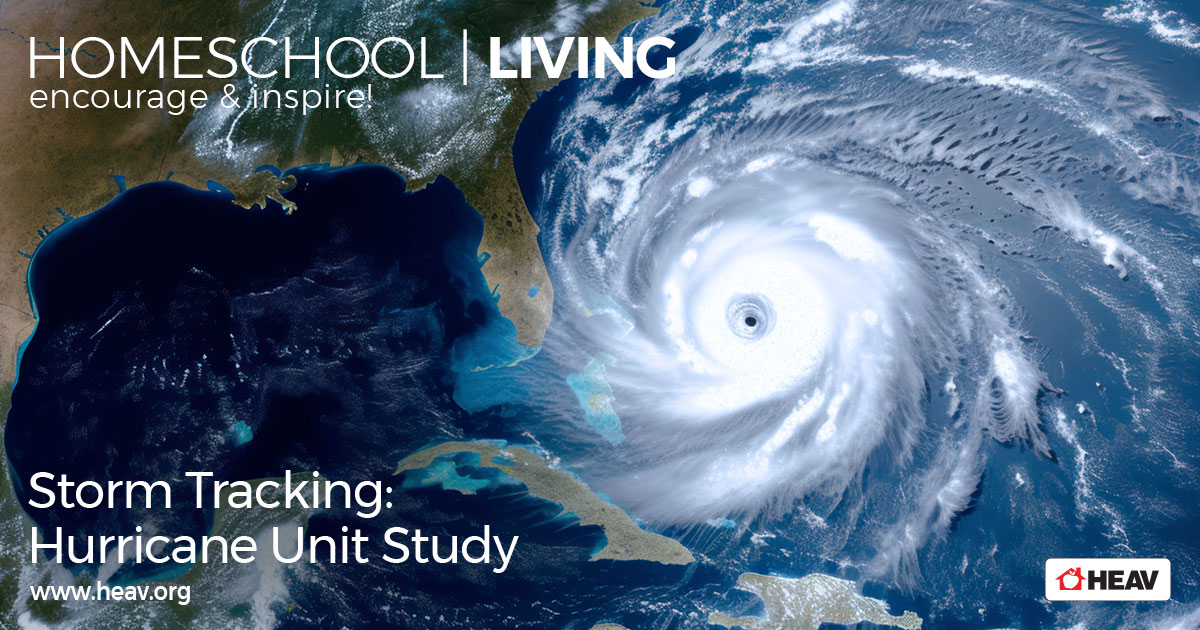Hurricane Unit Study
Hurricanes, those awe-inspiring yet formidable natural phenomena, can both fascinate and frighten. With the Atlantic hurricane season in full swing, now is a great time to incorporate a hurricane unit study into your homeschool. Check out this Homeschool Living for some great science experiments, historical records, and other resources to enrich your homeschool hurricane unit study.
Hurricane Science Fun
One of the simplest experiments involves creating a mini hurricane in a jar. By observing this mini storm, students can visualize how hurricanes form and how the eye of the storm remains calm amidst the swirling chaos. This experiment not only demonstrates the fundamental concepts of cyclone formation but also highlights the importance of the eye in the storm’s structure. Check out Science Explorers for more detailed instructions on this and other hurricane science experiments.
This unit study from Look We’re Learning includes interactive activities, worksheets, and hands-on projects tailored to elementary students. It covers key concepts such as the formation of hurricanes, their impact on communities, and the science behind their power.
Hurricanes Through the Years
Understanding hurricanes isn’t complete without exploring their historical impact. The National Hurricane Center offers a fascinating look at some of the most significant hurricanes in history. From the Great Galveston Hurricane of 1900 to more recent storms like Hurricane Katrina, these historical accounts provide valuable lessons on the impact of hurricanes on human societies and infrastructure. By studying past hurricanes, you can learn about advancements in forecasting, changes in building codes, and the ongoing efforts to improve disaster response and preparedness.
The Homeschool Scientist offers an array of lesson plans, videos, and activities focused on hurricanes. From detailed explanations of hurricane mechanics to hands-on experiments demonstrating the formation of hurricanes and storm surges, these resources provide a wealth of information to add to your hurricane unit study.
For more weather tracking ideas and resources, check out this Homeschool Living. By using weather maps, tracking storm systems, and analyzing data, students can see firsthand how scientific methods are applied to monitor and forecast hurricanes.
Megan Mora Fuentes
Enjoy this article?
For more insightful and encouraging homeschool related articles, homeschool living tips, and homeschool connections, visit our HEAV blog.









